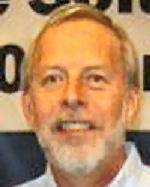 |
AC6BW Roger W. Miller San Jose, CA QCWA # 37150 |
I came into the hobby in 1973, after being an avid SWL for quite some time. I remember listening to all the hams operating on HF SSB and CW, and it really sparked my interest.
I was first licensed as a Novice, WN1PGZ, in 1973, while living in Litchfield, CT. My first rig was a Heathkit DX-60B TX, which I built myself, and a general purpose Radio Shack RX. The antenna was an 80m dipole, together with a 40m inverted-vee, which I also loaded up on 15m. I had a blast working CW with as many crystals as I could get my hands on. Novices were "rock bound" in those days, so we were limited to only use crystal controlled transmitters. After I got my General class license, I added the Heathkit VFO to my setup.
The Novice license was a 2 year non-renewable "upgrade or lose it" back then. I loved the hobby, and wanted to keep going, so I upgraded to General as WA1RDC around 1974, while I was attending college at the Univ of Connecticut. I was majoring in Electrical Engineering. My ham radio experience was a major factor in my decision to pursue a degree in EE. I maintained the station at home, and added SSB capability. I joined the UConn amateur radio club, and we had a wonderful station setup on the top floor of the highest point on campus, which included a KW amp and a tri-bander yagi! After graduating college in 1978, I went to work and relocated to Enfield, CT. Work and career commitments took precedence, so I was QRT for a number of years. Unfortunately, I also let my license lapse.
I relocated to the San Francisco Bay Area of CA in 1980. In 1989, I got the itch to get back into ham radio. I took the General class exam and passed. The examiner asked if I wanted to take the Advanced class exam while I was there, which I did, and to my surprise, I passed! I was then licensed as KK6AK. I was back on the air, operating mostly CW, from an apartment QTH, with a mobile vertical antenna on the patio. I quickly learned that the call KK6AK was particularly troublesome when operating CW. Too many K's, and the final K was often mistaken for the "invitation to transmit" K! I solved that problem in 1994 by upgrading to Extra, and I received the call AC6BW. My interest at this time was mainly working CW DX, with focus on DXCC and all the endorsements. I did very well pursuing that goal with a modest setup in the apartment. The outstanding conditions of Solar Cycle 22 certainly helped!! I eventually upgraded the antenna to a MFJ-1796 40m-6m half-wave vertical, added an old SB-200 amplifier, and continued my DX pursuits. I ended up working over 200 DXCC countries with this setup.
I was QRT again in 2000, due to family, career and personal commitments. But, this time, I didn't let my license lapse! As of 2014, I'm back on the air, and with a new HF rig and antenna. I'm having a great time and enjoy being back in the hobby! My interests still include DX'ng, but now I have branched out into other modes like SSB, FM, and the HF digital modes. I'm active now on local VHF/UHF FM repeaters, and on EchoLink. I recently became active on the HF digital modes of PSK31, JT65/9 and RTTY, and I am having lots of fun with those modes. I think that PSK31 and JT65/9, especially, will prove to be very valuable modes if the next couple of solar cycles turn out to be as feeble as predicted. I worked my first RTTY contest, CQ WW RTTY, in late Sep 2014, and it was loads of fun!
My current equipment:
Yaesu FT-450D HF + 6m Transceiver
N6BT Q52 2-element Relay Switched Yagi at 35 ft; Covers 20,17,15,12,10m bands. Homebrew automatic antenna bandswitching relay box, opto-isolated, and controlled by PC running HRD.
Yaesu G-450A Rotator; Hy-Gain YRC-1 automatic controller, controlled by HRD
MFJ-1796 40m-6m Vertical Dipole, base at 25 ft
Ameritron AL-811H Amplifier: 600W CW, 800W PEP
West Mountain Radio RigBlaster Advantage USB interface, for HF digital modes
Palomar Engineers P-310X Preamplifier, 160-6m
MFJ-422B Bencher Paddle/Curtis Keyer Combo
MFJ-949D 300W Tuner
MFJ-962C 1.5KW Tuner
MFJ-931 Artificial Ground
Radiosport RS20S Headset (great headphones!)
Ham Radio Deluxe for Logging SW, Rig control, Rotator control, Antenna band switching and Digital Modes
Alinco DJ-500T HT 2m, 70 cm
Awards:
DXCC Mixed # 60,025 [284 Worked/ 284 Confirmed]
DXCC CW # 6,619 [274 Worked/ 273 Confirmed]
DXCC Phone # 43,463 [163 Worked/ 156 Confirmed]
DXCC Digital # 4,663 [119 Worked/ 113 Confirmed]
DXCC 40m # 1,759 [150 Endorsement]
DXCC 20m [200 Endorsement]
DXCC 17m
DXCC 15m [150 Endorsement]
DXCC 10m # 35,395
WAS CW # 48,500
WAS Digital [JT-65 Endorsement]
WAC CW; Phone; Digital
CQ WPX Mixed # 3,057; [Endorsements: 550; North America]
CQ WPX CW # 3,735
I am proud to point out that all of the above DXCC credits and awards were achieved from my home stations, all located within Santa Clara County, CA. No unethical practices (i.e., cheating) were involved, such as claiming DXCC credit from a West Coast QTH, when working Mt Athos using an internet connected remote station located 3000 miles away on the East Coast. I'm not trying to get political, but this remote ops and DXCC credit is an issue that I feel very strongly about, and is a matter of personal integrity and pride for me. In my opinion, it is cheating to claim DXCC credit for any QSO where a remote station is distant enough from the control location to provide a propagation advantage. And I'm disappointed that the ARRL took such a lame-ass stance on the issue. Referring to the technological advancements that have allowed remote operations: Just because it "can" be done, doesn't mean that it "should" be done. Your opinion may be different, and I totally respect that.
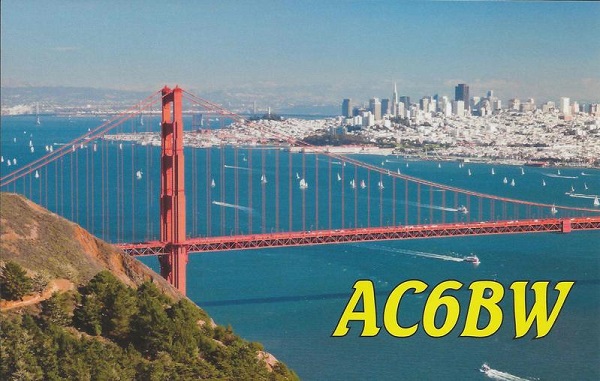
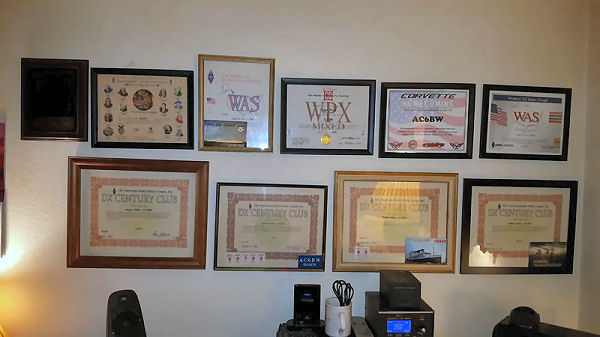
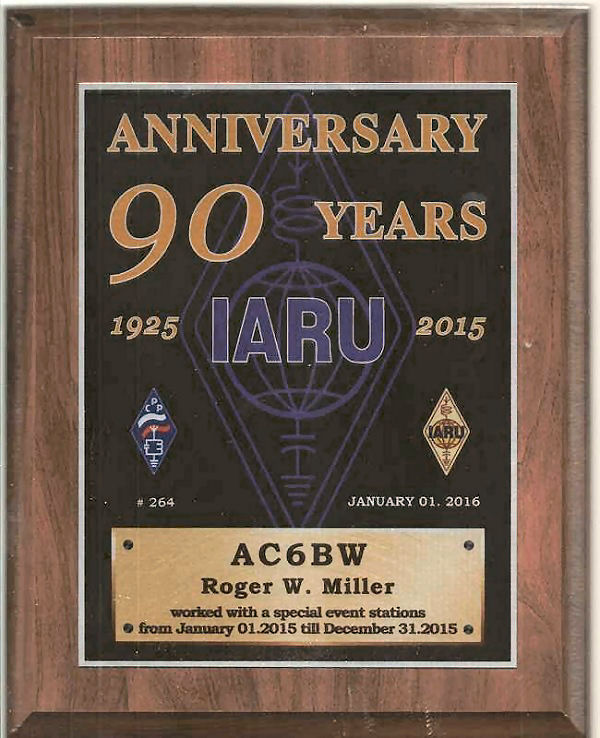
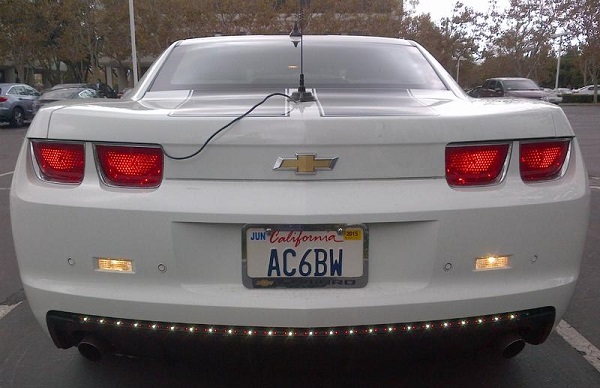
August 12, 2016